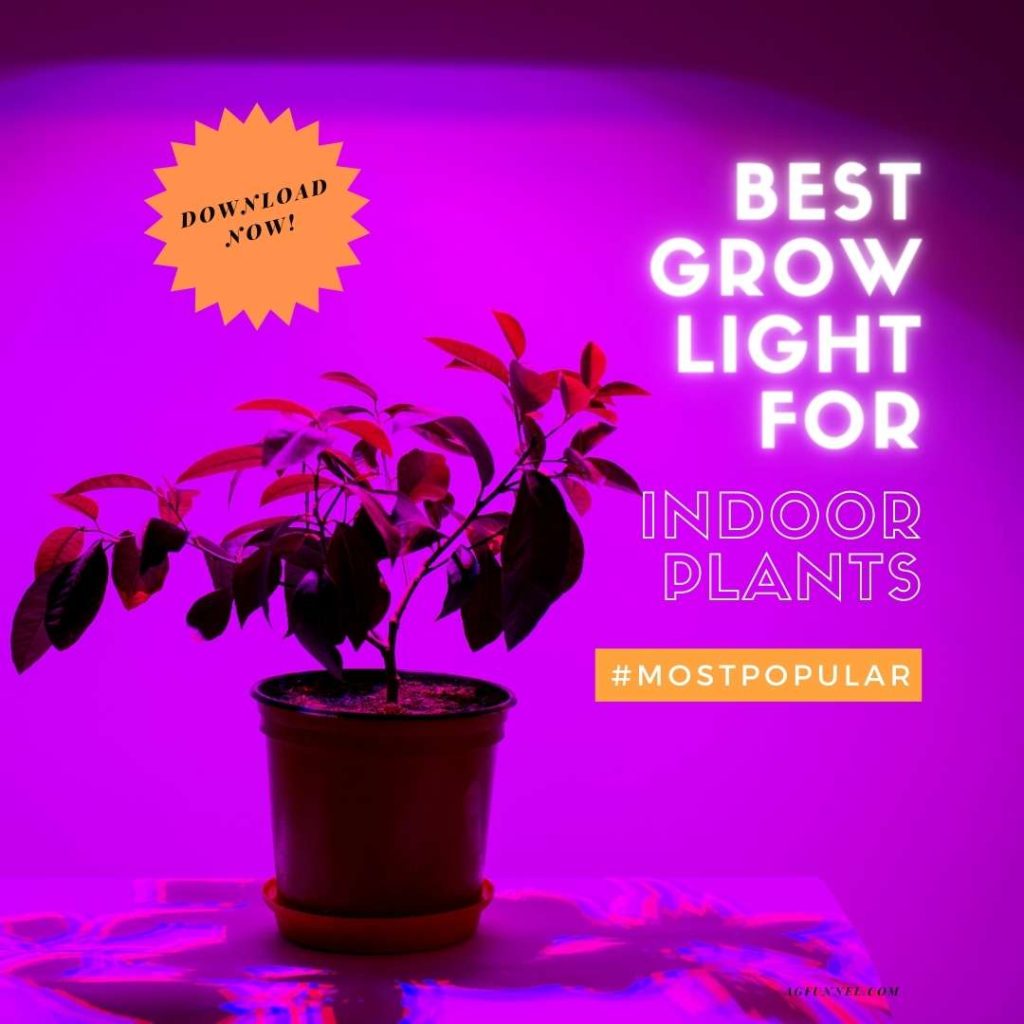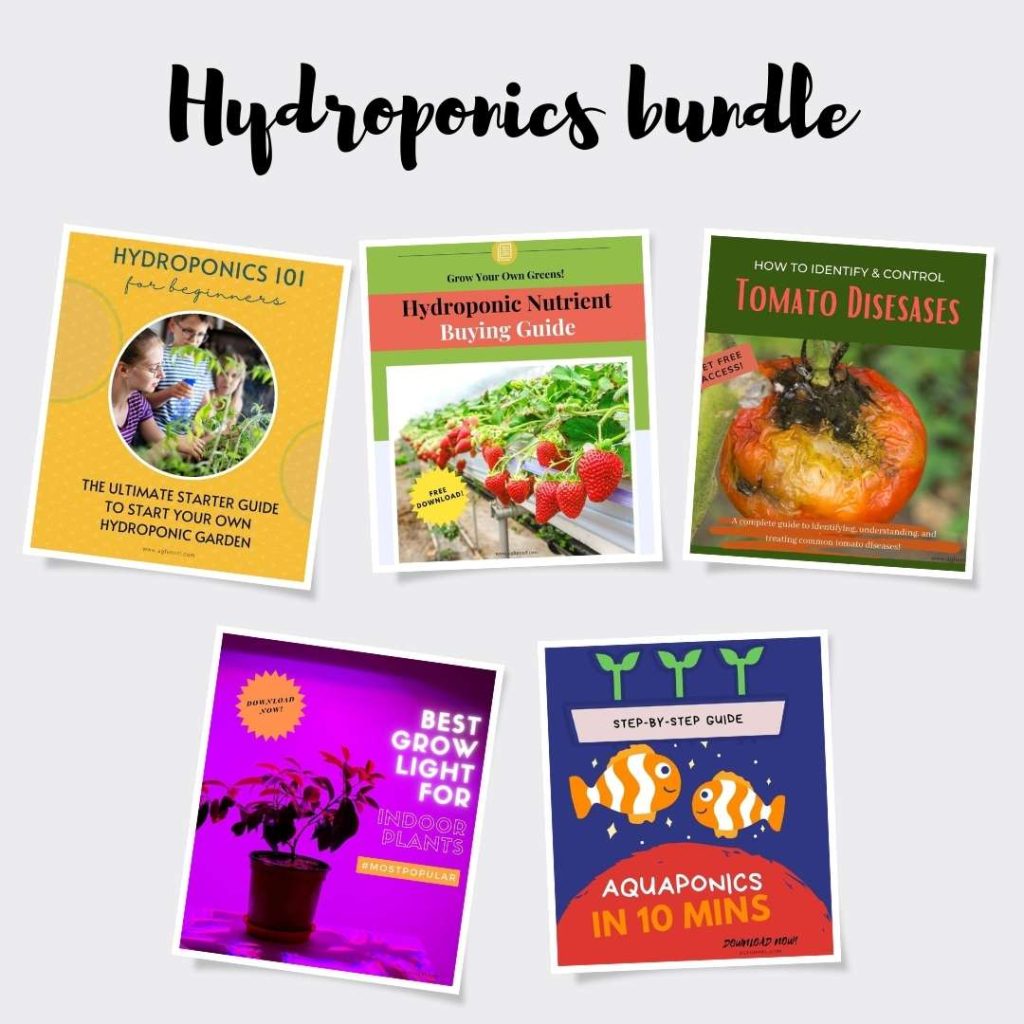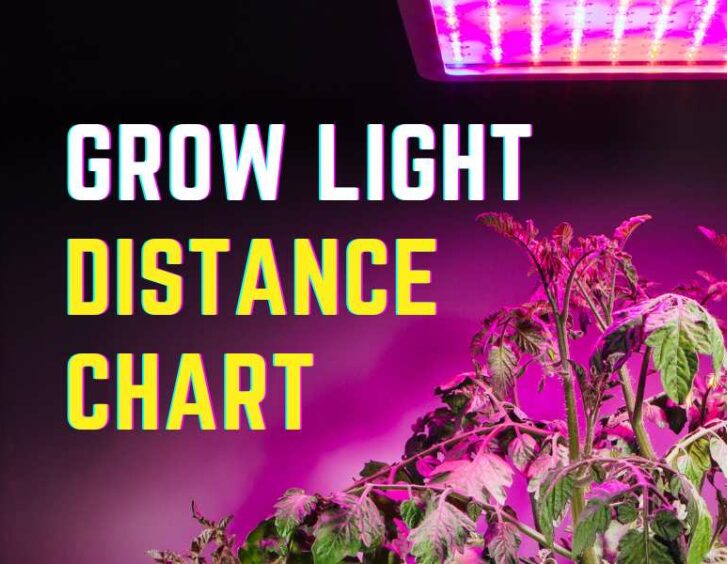The grow light distance chart can help you determine the optimal distance between your plants and grow lights. Different plants need different amounts of light, so it is important to adjust the distance according to the type of plant you are growing. This article will discuss the various factors that affect grow light distance, as well as some tips for choosing the right grow lights and adjusting your grow light distance. Whether you are a beginner grower or an experienced grower, the grow light distance chart should be an essential tool in your gardening toolbox.
What is a grow light distance chart?
A grow light distance chart is a tool that helps you determine the optimal distance between grow lights and your plants. The grow light distance chart considers several factors that can affect plant growth and development, including the type of plant being grown, the quality of grow lights used, and the lighting intensity. These factors all interact with each other to determine how far grow lights should be from your plants to provide optimal light conditions for growth and development. For example, some plants require more intense lighting than others, so the grow light distance may need to be adjusted to accommodate this difference.
In addition, grow lights with different qualities (such as full-spectrum LED grow lights versus standard fluorescent grow lights) will produce different results at different distances. Moreover, environmental factors such as temperature and humidity can also play a role in grow light distance.
.jpg)
Grow light distance chart calculator
To calculate the LED grow light distance chart, you will need to gather information about several factors, including:
Grow light types: There are many grow lights available, including LED grow lights, fluorescent grow lights, and HID grow lights. Each grow light type has different qualities and properties that can impact grow light distance. For example, LED grow lights produce more intense light than fluorescent grow lights, so they may need to be further away from your plants to provide adequate lighting. Dimmable grow lights can also offer more flexibility regarding grow light distance. Manual adjustments may be necessary if you are using a grow light that is not dimmable.
Plant type: Different plants have different lighting needs and require varying light intensity to grow and thrive. For example, seedlings may need less grow light distance than larger, more mature plants.
Environmental factors: In addition to grow light and plant types, environmental factors such as temperature, humidity, and air circulation can also impact grow light distance. For example, higher temperatures may require greater grow light distance than lower temperatures. Similarly, if your grow space is humid or dry, you will want to adjust the grow light distance accordingly.
Lighting intensity: The quality and intensity of grow lights will also impact grow light distance. For example, halide grow lights produce bright, intense light that may need to be further away from your plants, while fluorescent grow lights produce less intense light and may require a shorter grow light distance. PAR and PPDF values can also help you determine to grow light intensity and may be useful when choosing to grow lights, or adjusting grow light distance. PAR stands for photosynthetic active radiation, which is light emitted in the 400-700 nanometer range. PPDF stands for photosynthetic photon flux density and measures the amount of usable light reaching your plants.
Once you have gathered this information, you can use the grow light distance calculator to determine your plants' optimal grow light distance. The calculator is based on scientific research that has been conducted on plant growth and development. It considers various factors, including the type of plant, grow light wattage, and grow light quality.
Wattage: The grow light wattage is another key factor in grow light distance. Depending on the grow light you are using and its intensity, the grow light distance may differ. 600W grow lights, for example, may require a greater grow light distance than smaller grow lights. 1000W grow light distance may require even more distance.
Grow light quality: In addition to grow light wattage, grow light quality is another important factor affecting grow light distance. For example, full-spectrum LED grow lights may require a different grow light distance than standard fluorescent grow lights.
Environmental factors: Other environmental factors, such as temperature and humidity levels, can also affect grow light distance. For example, plants may require more grow light distances in warmer temperatures or particularly dry conditions.
After you input your desired information into the calculator, it will give you three different distances depending on what stage of growth your plant is in: whether it's a seedling, vegetative, or flowering stage plant.
Seedling stage: The grow light distance for seedlings will typically range from 12-24 inches, depending on the grow light. For example, a full-spectrum LED grow light may require a slightly greater grow light distance than standard fluorescent grow lights.
Vegetative stage: In the vegetative stage, you will likely need to move your grow lights to a grow light distance between 2-6 feet. This will help ensure that your plants get the right light intensity to grow and thrive.
Flowering stage: During the flowering stage, your grow lights may need to be moved further away from your plants to avoid bleaching or damaging them. In this stage, grow light distance may range from 4-12 feet or even more.

Download our complete guide to choose the best grow lights for indoor plants
How can I measure light intensity for plants?
There are many ways to measure light intensity for plants:
PAR meter: PAR meter is a device that measures photosynthetically active radiation (PAR) in plants. Using a PAR meter to measure light intensity will give you an accurate reading of the light intensity at a specific grow light distance. This is the most reliable way to measure grow light intensity, especially using specialized grow lights. However, a PAR meter can be expensive and require some training or experience to use correctly.
Photometer: A photometer is another tool that you can use to measure grow light intensity. Rather than directly measuring the photosynthetically active radiation, a photometer will estimate grow light intensity based on color measurements. While this method may not be as precise as a PAR meter, it can still provide valuable information about grow light distance.
Lux meter: A lux meter is another tool that you can use to measure grow light intensity. This device uses reflectance measurements to measure grow light intensity, similar to how a photometer works. However, unlike a photometer, this method cannot accurately measure grow light distance or intensity during different stages of plant growth.
PPDF meter: A PPDF (photosynthetic photon flux density) meter measures the amount of usable light that reaches your plants. It can be useful for measuring grow light intensity and help you choose or adjust grow light distance. However, this is generally considered less accurate than a PAR meter, as it only measures light in the visible spectrum.
Light meter: A light meter is another tool that can be used to measure grow light intensity and distance. While a light meter will not give you as accurate grow light distance information as a PAR or PPDF meter, it may be more accessible and easy to use than other grow light measurement tools.
LED grow light distance chart
LED grow lights provide several benefits for indoor gardeners and horticulturists. They are more efficient, longer lasting, and produce less heat than other grow light types.
.jpg)
Here is a LED grow light distance chart focusing on the various wattages of LED grow lights:
-If your grow light wattage is 200W, you should keep your lights about 12-20” away from your plants during the vegetative phase and about 8-12” away during the flowering phase.
-If your grow light wattage is 300W, you should keep your grow lights about 12-24” away from your plants during the vegetative phase and about 8-18” away during the flowering phase.
-If your grow light wattage is 400W, you should keep your grow lights about 18-30” away from your plants during the vegetative phase and about 10-20” away during the flowering phase.
-If your grow light wattage is 600W, you should keep your grow lights about 24-36” away from your plants during the vegetative phase and 10-24” away during the flowering phase.
-If your grow light wattage is 1000W, you should keep your grow lights about 36-48” away from your plants during the vegetative phase and 12-30” away during the flowering phase.
Fluorescent grow light distance chart
Compared to LEDs, fluorescent grow lights are less effective for indoor plants. However, they can still play an important role in your garden or grow space if used correctly.
One key factor to consider when using fluorescent grow lights is the distance between your light source and your plants. Generally, you should keep your grow light 6-12” away from your plants during the vegetative phase and 8-18” away during the flowering phase.
Choosing a grow light rated for your grow space is also important. For example, you may need multiple fluorescent grow lights if you are growing large plants or plants with high light requirements.
Other factors to consider when using fluorescent grow lights include temperature and humidity levels, plant type, and size. By understanding these factors, you can create the optimal growing environment for your plants, regardless of whether you use LEDs or fluorescent grow lights.
HID grow light distance chart
Another common grow light option for indoor gardeners is high-intensity discharge (HID) grow lights, such as metal halide (MH) or high-pressure sodium (HPS) grow lights. Compared to fluorescent grow lights and LEDs, HID grow lights are more efficient and effective at supporting plant growth. However, they require more care and attention, including proper grow light distance.
The optimal grow light distance for HID grow lights will depend on your grow light type and wattage. For example, suppose you are using a 250W MH grow light. In that case, you should keep it about 12-24” away from your plants during the vegetative. And if you are using a 1000W HPS grow light, you should keep it about 24-36” away from your plants during the vegetative phase and 12-30” away during the flowering phase.
Grow light distance chart for Cannabis Plant
Indoor cannabis growers often use grow lights to support plant growth and achieve optimal harvests. Whether you are growing auto-flowering or photoperiodic cannabis plants, growing light distance can play an important role in achieving your goals.
For cannabis plants, the optimal grow light distance can depend on several factors. These include grow light type, grow light wattage, plant height, canopy size, and environmental conditions like temperature, humidity, and air circulation.
To start, it is generally recommended to keep grow lights about 12-20” away from your cannabis plants during the vegetative phase and 8-12” away during the flowering phase. However, you may need to adjust this distance depending on your grow light type, wattage, and other factors like plant height and canopy size.
Ultimately, the best grow light distance for your cannabis plants will depend on your growing conditions and goals. To achieve optimal results, you may need to experiment with different grow light distances and closely monitor plant growth and development.
The potential risks of cannabis overexposure to light
Although grow lights can support healthy plant growth and achieve optimal harvests, overexposure to grow lights can have negative consequences for your cannabis or other plants. These includes:
Leaf burn: Plants overexposed to grow lights may experience leaf burn, damaging plant leaves and reducing photosynthesis.
Stunted growth: Excess light exposure can lead to stunted plant growth or reduced yields. This is especially true for still-developing plants, such as seedlings and young plants.
Mold and mildew: High temperatures and humidity levels caused by grow light overexposure can also increase the risk of mold and mildew growth on your plants.
Bleaching: Excessive grow light exposure can also cause plant bleaching, where leaves or other parts of the plant lose their color and turn white or yellow.
The potential risks of cannabis underexposure to light
Although grow lights can support healthy plant growth and achieve optimal harvests, underexposure to grow lights can negatively affect your cannabis or other plants. These includes:
Nutrient deficiencies: Plants that receive too little light exposure may not be able to properly absorb nutrients from the growing medium.
Stunted growth: Although grow light overexposure can lead to stunted plant growth, underexposure can also cause plants to grow more slowly. This is especially true for young or developing plants.
Weakened immune system: Underexposure to grow lights may also weaken a plant’s natural defenses and increase its susceptibility to disease and other environmental stressors.
Crop failure: When grow light overexposure or underexposure negatively impacts plant growth or development, there is an increased risk of crop failure. This can lead to reduced yields, lower-quality crops, or even total crop loss.
Tips for achieving optimal grow light distances
If you are a cannabis grower looking to achieve optimal grow light distances for your plants, several tips can help you. These include:
Pay Attention to the Manufacturer’s Recommendations: Each grow light will have its own recommended grow light distance, and it is important to follow these recommendations when using that grow light.
If It’s Too Hot for You, It’s Too Hot for the Plants: As a general rule, if the grow lights are too hot for you to comfortably stand next to them, they may be too hot for your cannabis plants. It is important to monitor grow light temperatures carefully and take action to reduce heat levels if necessary.
Use Fans and Circulation Systems: To help cool grow light temperatures and keep grow lights at optimal distances, incorporate fans and circulation systems into your grow space.
Monitor Plant Growth and Development: It is also important to closely monitor plant growth and development as you adjust grow light distances. This can help determine whether grow lights need to be moved closer or further away from your plants to achieve optimal results.
Make Adjustments as Necessary: Depending on your grow light type, grow light wattage, plant height, canopy size, and other factors, you may need to adjust grow light distances throughout the growth cycle. This is especially true during the vegetative phase and flowering phase of cannabis cultivation.
Experiment with Different Grow Light Positions: Another strategy to optimize grow light distances is to experiment with different grow light positions, such as hanging grow lights at varying heights or using grow lights in different configurations.
Following these tips and paying careful attention to grow light distances, you can successfully grow cannabis plants or other plants under grow lights. Whether you are an experienced grower or just starting, the right grow light distance can help ensure healthy plant growth and optimal harvests.
FAQ
What is a full spectrum led grow light distance chart?
Full spectrum grow light distance charts help gardeners and growers determine the ideal distance between their plants and grow lights. These charts consider factors such as wattage, plant type, and growth stage to provide personalized recommendations for optimal grow light spacing. Whether growing seedlings or more mature plants, a full spectrum grow light distance chart can help ensure that your plants receive the right amount of light for optimal growth and development. Additionally, these charts can help you decide about other factors in your grow setup, such as grow light height, reflector positioning, and grow room layout.
Which colors affect which stages of vegetation?
There is no definitive answer to this question, as the impact of different grow light wavelengths on plant development can vary depending on various factors, including grow light type, grow light intensity, growing environment, and individual plant characteristics. Generally speaking, blue and red grow lights are thought to be most beneficial during the vegetative stage. In contrast, white grow lights may be most beneficial during the flowering stage. Additionally, different colors and grow light wavelengths are thought to affect plant growth in distinct ways. For example, blue grow lights may promote robust vegetative growth and green leaf development, while red grow lights can help trigger flowering in plants. Ultimately, it is important to experiment with different grow light wavelengths and combinations to find the best fit for your grow setup and plants.
Where should grow lights be located?
The optimal grow light distance depends on the type of grow lights you are using and the size and stage of your plants. Generally speaking, LED grow lights should be kept between 12-18 inches from seedlings to ensure adequate light exposure, while larger plants can tolerate a slightly greater distance. You should also consider factors like the size and number of grow lights, the temperature and humidity in your grow space, and the stage of plant development when determining optimal grow light placement.
What Is the Ideal Grow Light Distance for Different Plant Growth Stages?
The easy grow light spectrum is crucial for optimal plant growth at different stages. During the seedling stage, place the light 24 inches away. For vegetative growth, the distance should be 18-36 inches. And during the flowering stage, keep the light 12-24 inches away for best results.
How far LED grow lights should be from clones?
LED grow lights are typically kept between 12-18 inches from seedlings to ensure optimal light exposure. This distance may vary depending on the size and stage of your plants and other factors like grow space temperature and humidity levels. Additionally, you should consider any additional grow lights you may be using and the overall size of your grow space.

Learn everything about hydroponics, from the basics to advanced techniques.




















